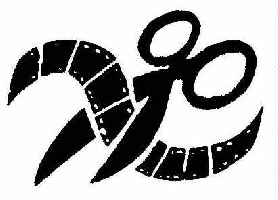
SUBMINI FILMS

You have several options regarding film for your subminiature camera. Which path you take depends on your situation and your camera.
If cameras of your format are still being made -- such as the Minox format, 35mm half-frame, or the 110 format -- you can still buy new film in cassettes and get it processed. You just need to find out where to get it, which is covered in other sections of the FILM COUNTER.
If no one still makes cameras of the format that you are using -- such as 16mm format -- things won't be quite so easy. But a lot depends on your situation, your camera, your location, and your talents. For most cameras, you need a cassette, you need film, and you need to get the film processed (and perhaps prints made). You should think of these as three separate steps.
For most subminis, it is unlikely that you will find a cassette that is loaded with film. And even if you find one loaded with film, it will probably be out-of-date film.
If you do find an empty (or full) cassette, you will at some point want to reload it with film. This brings up several issues:
1. Which film will fit in my camera?
If you are unsure what size film fits in your camera, first find your camera in the list of CAMERAS in the SUBCLUB. You might be able to find companies that sell the sell the cassettes re-loaded with new film, companies that will reload your cassettes, or companies that will sell you raw film that you can use to reload the cassettes yourself. Another approach is to take film from larger format cameras, such as 35mm, and slice smaller strips that will fit into submini cameras. Details are listed in other sections of the FILM COUNTER.
2. What film will give me the best results?
If you have a choice of films, you need to select the film according to the situation underwhich the film will be exposed. Normally, the slower the film speed (lower ISO), the finer the grain and the richer the color. Alternately, the higher the film speed (higher ISO), the faster shutter speed and the more depth-of-field. Slower speed films give sharper results, but need more light. More details about films are listed in other sections of the FILM COUNTER.
3. What type of film perforations do I need?
Some 16mm cameras use unperforated film, some used single-perforated film, and others used double-perforated film. Some 8mm cameras use unperforated film, some used 8mm-perforated film, and others used super 8mm-perforated film. Some cameras will not advance the film without the correct perforations, others will produce cut-off images even while advancing the film. More details about films are listed in other sections of the CAMERAS and the FILM COUNTER.
4. Where do I get the film processed?
You need to detemine this first. The bigger problem occurs when you want to get processing and printing . If you want to handle the processing yourself, check out the DARKROOM. If you don't want to do the processing yourself, there are still places that might develop the film for you, depending on what it is. For more information about this aspect of the process, check out processing options at the FILM COUNTER. But remember, when you have someone else do the film processing, you usually lose the cassette and you will need to get a replacement. Think back to how hard it was to get the cassettes that you just used. Since they aren't being made anymore, you are contributing to the demise of your own camera.
5. How do I reload the cassette?
Some companies can do this for you, but you can do it yourself. The reloading might be fairly easy, or it might be next to impossible -- it depends on the type of camera and cassette that you are using. Some cameras can use uncut film, but with others, you'll need to cut the film down to size yourself. We also have some tips on reloading submini cassettes in the DARKROOM.
Most importantly, with a little bit of effort, just about any submini camera can still be used.

To return to the main index for the Sub Club click here.
COPYRIGHT @ 1995, 1996, 1997, 1998, 1999, 2000, 2001, 2002, 2003, 2004, 2005 by Joe McGloin. All Rights Reserved.